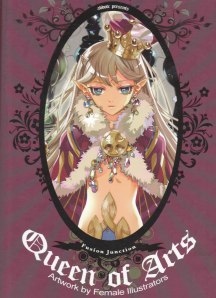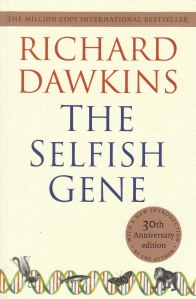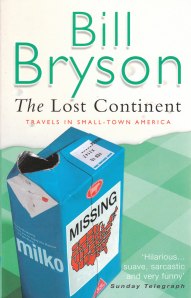Publisher: ABDOTC Publishing
Date Published: 2008
Pages: 116
Size: 12.3″ by 9.5″ (Hardcover)
Artwork by Female Illustrators
‘How wrong it is for women to expect the man to build the world she wants, rather than set out to create it herself.’ – Anais Nin
The Fusion Junction series returns, this time with an all female line up in the special ‘Queen of Arts’ edition. Published in the same year as ‘Fusion Junction 3’, ‘Queen of Arts’ retains the format of featuring four artists and including brief interviews afterwards. (For reviews on the previous books, click here for FJ1, FJ2 and FJ3)
The selection is reasonably diverse in culture as well as technique. Two of the artists, Maggi and Nox (who return from Fusion Junction 1), represent modern Korean game art. Saskia and Loish hail from western europe – Germany and Holland respectively.
Maggi is first in the line up (real name Jeong Won An, aged 26). Her style is a highly palatable pseudo Victorian amalgamation, as if she is re-imagining western europe with a hundred times more frills and bows. Her character design is decadent, with a high attention to detail, however she tones down some of the outfits by rendering them in whites, grays and warm browns. This helps to balance the embellishment, lest it get overwhelming. On show here is mainly her individual character designs, though a few ‘picture’ artworks are featured. Some of the artworks look a little unfinished though, in particular the facial details need to be sharpened.
In contrast to Maggi, Saskia Gutekunst of Germany is next (aged 23). Saskia’s style has a nebulous, mysterious quality. In the artworks, Saskia comes across as confident in her use of cloying darkness alongside pyrotechnical flashes of
colour, creating images of aura and shadow. Her comic illustrations use heavy confident lines and possess a fluidness that easily renders motion. The most common feature of her works is the eyes – which have an evocative, spell binding quality.
I didn’t really think the selection for Nox (Su-Jeong An, aged 23, Korea) was good at all. Her artworks in Fusion Junction 1 were of much more interesting content. In this edition we get more of her clichéd anime style leaning projects – using such imagery as cigarettes, angel wings and effeminate males – which are somewhat devoid of interesting visual content.
Finally, Loish (Lois Van Baarle, aged 22) of Holland is featured. Her favorite colour, aqua, appears prominently in her artworks, as well as surreal underwater scenes. Loish’s cartoon like illustrations sometimes remind me of old-fashioned political caricatures. Every picture has a lively feel, as if a pulse is passing through them. In particular, she is excellent at facial expressions (see her sketch in this article) and I think would be an excellent choice for any upcoming Disney cartoon (if they would stop doing 3D for two minutes!).
It may seem that I am less sympathetic to the Korean artists and this is true. Although their artwork is of good quality, they are still using clichéd techniques and designs common in the mainstream anime/gaming market – all of which have lost their ability to visually dazzle me.
Because this book has made the point of being dedicated solely to female art, allow me to mull over some of the questions it led me to ask.
In modernist countries, such as Korea, Germany and Holland, is there really that much of a difference between the art of men and women anymore? Compared to other countries where strictly defined gender roles are still in vogue, I would say no (if women there were given the chance to create art). But Queen of Arts still represents a subtle shift in perception and raises some interesting questions.
One of the things I have noticed is that women still seem interested in drawing alluring and scantily clad female characters in their artworks.* When a male drawer depicts sexy women, the motives seem fairly obvious; we assume that he does so because he likes looking at gorgeous women – perhaps he even designs his ideal woman. But why do female drawers do this?** Why not depict women more naturally, or at least more relative to how we experience each other? Is it just habit? Is it because of the market they are aiming at? Is it the way they would like to look and dress given the chance?
Maggi answers this to some extent: ‘I like illustrating curves and the delicateness of a woman’s body’. On the surface of things, this seems fair enough. Yet, viewed overall there seems to be some deficit in the manner in which women represent their own gender in art. Essentially, whose voice is coming from these works? It comes across to me that sometimes women are still representing female bodies in the manner men would, not with their own eye. I think this is partly due to a lack of artistic historical dialogue (women being in the minority of represented artists) to respond to, and also the prevalence of female bodies meaning SEX SEX SEX in the media. Like it or not, these images effects how people respond in art and literature, whether consciously or subconsciously. This is of course, is all taking into account that the artwork on display here is for commercial purposes – perhaps these artists draw women differently in their own sketches, perhaps not.
It is amusing to point out that this trend matches (or even crosses over from) classical and modern art, which has a truly abysmal record.
So in response to the opening quote of ‘Queen of Arts’ by Anais Nin – if we are to answer it in the context of ‘building our own art’. I don’t think that Nox and Maggi are quite there yet, but they are on the way. Saskia and Loish seem far more balanced in their approach though. However, these women are just as talented and diligent as the male illustrators – I’m merely pointing out how the history of female depiction is effecting their work.
I could also extend this question to race as well. Why do all the illustrators seem to depict western looking characters (except for Loich, who has a pretty good cross-section), regardless of whether they are western? I am aiming this question more at Nox and Maggi – Nox even goes so far as to depict a women in distinctly traditional Korean clothes with the pointed, narrow features of a western european. I have always been confused by this prevalence by eastern artists, particularly in Japanese anime, to create characters who look nothing like themselves.
With the exception of Nox, ‘Fusion Junction: Queen of Hearts’ delivers great quality female art in the gaming, cartoon and comic world. This is a necessary edition for anyone collecting the series and a welcome one for those who are just out to dabble in art.
♥♥♥ – 3/5
*Please note that I am referring to the two Korean artists, Maggi and Nox, in this line of questioning – who are far more mainstream (and therefore representative of trends) in their illustration style and manner than Holland and Germany.
**This assumes that the illustrators are heterosexual. My apologies to the artist if this assumption is incorrect.








